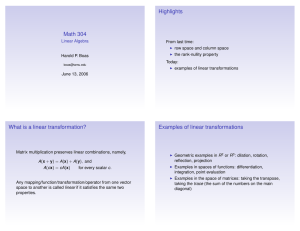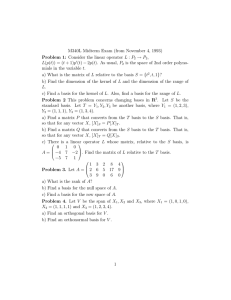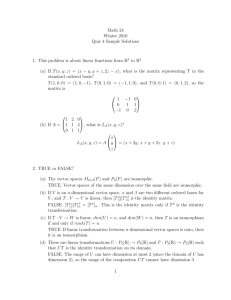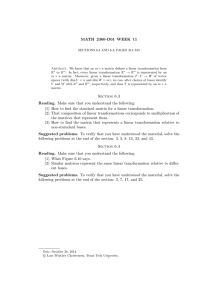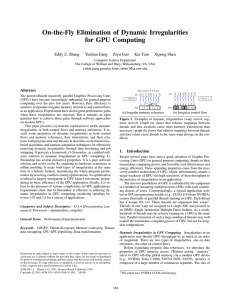MATH 2360-D01 WEEK 10
advertisement
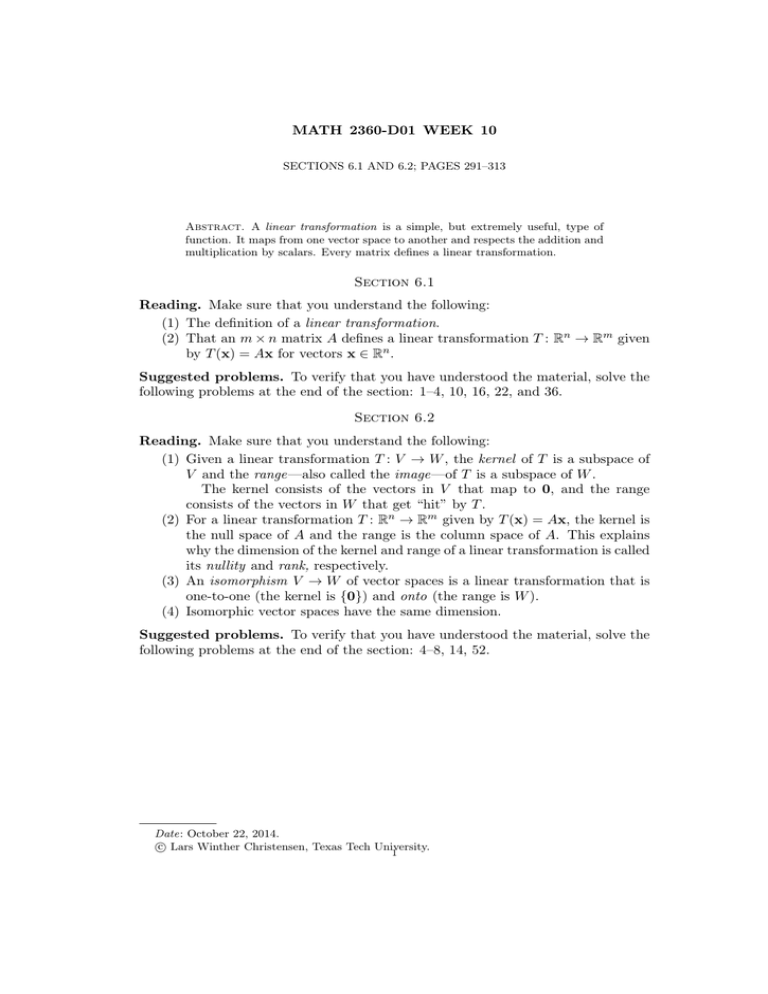
MATH 2360-D01 WEEK 10
SECTIONS 6.1 AND 6.2; PAGES 291–313
Abstract. A linear transformation is a simple, but extremely useful, type of
function. It maps from one vector space to another and respects the addition and
multiplication by scalars. Every matrix defines a linear transformation.
Section 6.1
Reading. Make sure that you understand the following:
(1) The definition of a linear transformation.
(2) That an m × n matrix A defines a linear transformation T : Rn → Rm given
by T (x) = Ax for vectors x ∈ Rn .
Suggested problems. To verify that you have understood the material, solve the
following problems at the end of the section: 1–4, 10, 16, 22, and 36.
Section 6.2
Reading. Make sure that you understand the following:
(1) Given a linear transformation T : V → W , the kernel of T is a subspace of
V and the range—also called the image—of T is a subspace of W .
The kernel consists of the vectors in V that map to 0, and the range
consists of the vectors in W that get “hit” by T .
(2) For a linear transformation T : Rn → Rm given by T (x) = Ax, the kernel is
the null space of A and the range is the column space of A. This explains
why the dimension of the kernel and range of a linear transformation is called
its nullity and rank, respectively.
(3) An isomorphism V → W of vector spaces is a linear transformation that is
one-to-one (the kernel is {0}) and onto (the range is W ).
(4) Isomorphic vector spaces have the same dimension.
Suggested problems. To verify that you have understood the material, solve the
following problems at the end of the section: 4–8, 14, 52.
Date: October 22, 2014.
c Lars Winther Christensen, Texas Tech University.
1
